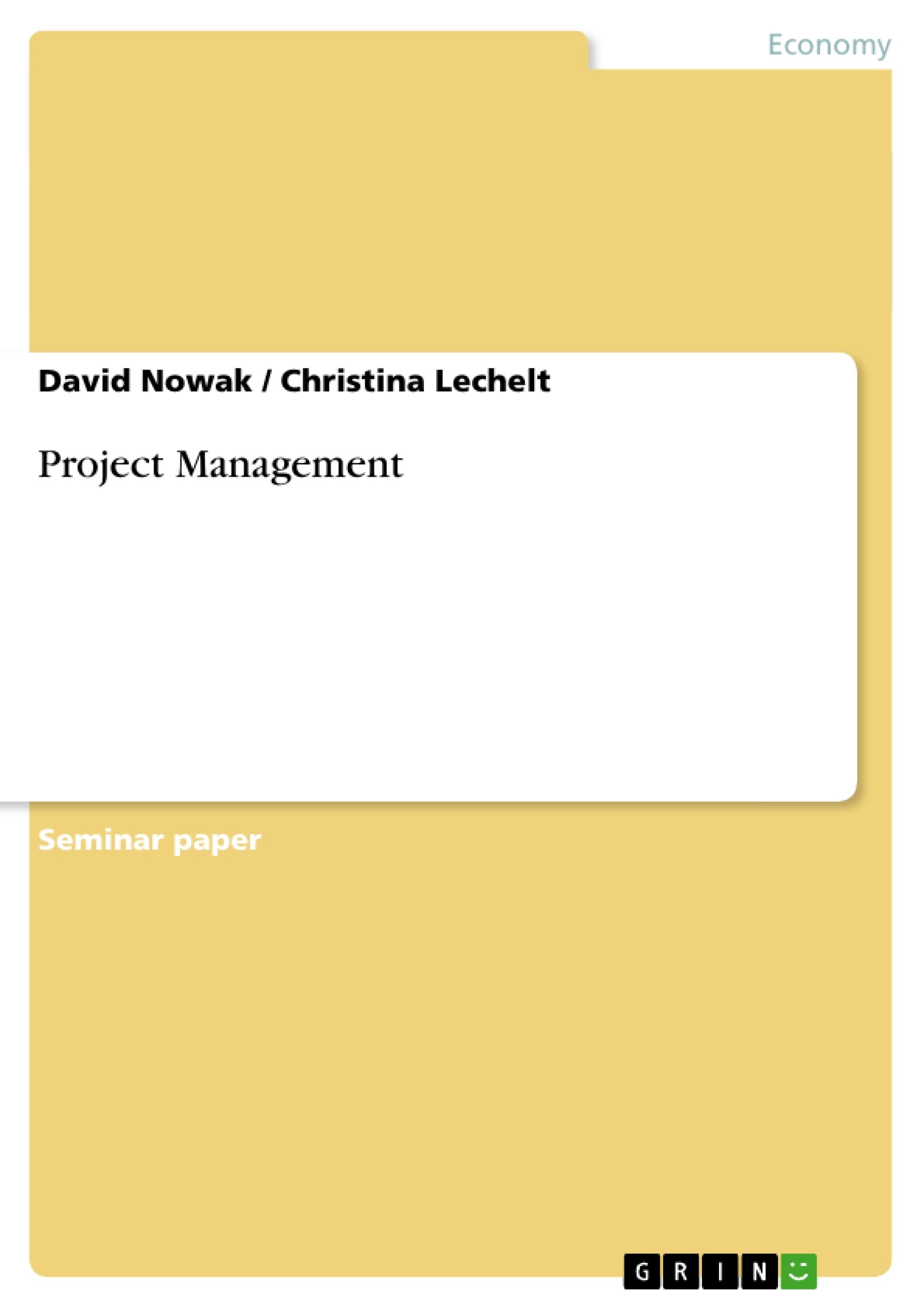"A project is a problem scheduled to be solved" (Dr. J. M. Juran). This citation briefly describes the highly demanding and complex task of project management. A more technical definition understands the nature of project management as "the entirety of managerial functions, managerial organisation, and managerial techniques and means for the carrying out of a project" (DIN 69 901). Project Management requires organizational skills, the foresight to anticipate the unexpected, and the ability to monitor progress and change course as needed. The use of project management continues to grow in our society and its organizations. Companies nowadays are growing more rapidly but their conservative organisational structure, which is based on functional specialisation, is not able to deal with increasing complex tasks, thus many goals could not be achieved in traditional ways but with project management. This has lead to the fact that businesses are more and more focussing on a more project - oriented approach. Businesses take advantage of project management when unique outcomes have to be accomplished and resources and time are limited. Projects are even more familiar in the service sector, where mostly campaigns, seminars, etc. are structured as projects. Since the massive growth in this field has made project management so popular, many companies nowadays also use it for restructuring. Generally, projects tend to be established for special tasks, e.g. extraordinary order sizes that have to be processed within a sharp time frame. It is also very common to carry out research and development of new products as projects. Of course, almost anything can be organized as a project, no matter how large the scope or money involved is.
Inhaltsverzeichnis (Table of Contents)
- How should projects be managed?
- Introduction
- What is a project?
- Project Objectives
- Project Organization
- The Project Life Cycle
- Project Selection
- Planning
- Build up
- Implementation
- Phase out
- Why do projects fail?
- Weaknesses of project management
- Strengths of Project Management
- The nature of project organisation, a "battle field" or a new possibility for learning?
Zielsetzung und Themenschwerpunkte (Objectives and Key Themes)
This text provides a comprehensive overview of project management, examining its theoretical foundations, practical applications, and potential challenges. It aims to shed light on the key principles, practices, and considerations involved in managing projects effectively.
- The nature and definition of projects
- Project objectives and the "magic triangle" of performance, cost, and time
- The challenges and complexities of project organization
- The strengths and weaknesses of project management in different contexts
- The role of project management in achieving organizational goals
Zusammenfassung der Kapitel (Chapter Summaries)
- How should projects be managed? This chapter introduces the concept of project management, defining it as a unique and complex endeavor involving careful planning, organization, and execution. It discusses the various stages of the project life cycle, from selection to implementation and phase-out, highlighting the importance of managing trade-offs between performance, cost, and time.
- Why do projects fail? This chapter delves into the potential pitfalls and challenges of project management, examining the weaknesses and strengths of project management practices. It explores the factors that can contribute to project failure, emphasizing the need for effective planning, risk management, and communication.
- The nature of project organisation, a "battle field" or a new possibility for learning? This chapter analyzes the nature of project organization, exploring its impact on organizational structures, learning processes, and the potential for conflict. It discusses the challenges of integrating project work with traditional organizational structures and explores the potential benefits of a project-oriented approach.
Schlüsselwörter (Keywords)
The main keywords and focus topics of this text include: project management, project life cycle, project objectives, project organization, project failure, risk management, communication, organizational structures, learning, and conflict.
- Arbeit zitieren
- David Nowak (Autor:in), Christina Lechelt (Autor:in), 2002, Project Management, München, GRIN Verlag, https://www.grin.com/document/47788



